Taylor Swift’s latest album, Midnights, topped the charts worldwide. When she announced her upcoming tour in 2023, after five years, millions of fans blocked their days out to see her perform, arranged travel in distant areas, and maybe signed up for credit cards to get the said presale codes. All this is for a chance to buy a ticket to her 52 stadium shows across 17 states in the U.S. But that anticipation quickly turned into bleak, resentful, and disappointing experiences due to a major UX failure.
This created bad blood against Ticketmaster, the company single-handedly responsible for conducting ticket sales. They have been criticized for their complex purchase flows, dynamic pricing, long waiting queues, monopoly, and whatnot. Let’s try to understand the incident from a user experience standpoint.
The Presale Disaster: The Root Causes
It seems as if Ticketmaster was unable to keep up with the demand. Following the fiasco, Swift, in her Instagram stories, stated that her team repeatedly asked Ticketmaster if they could handle the volume and intensity of her fandom.
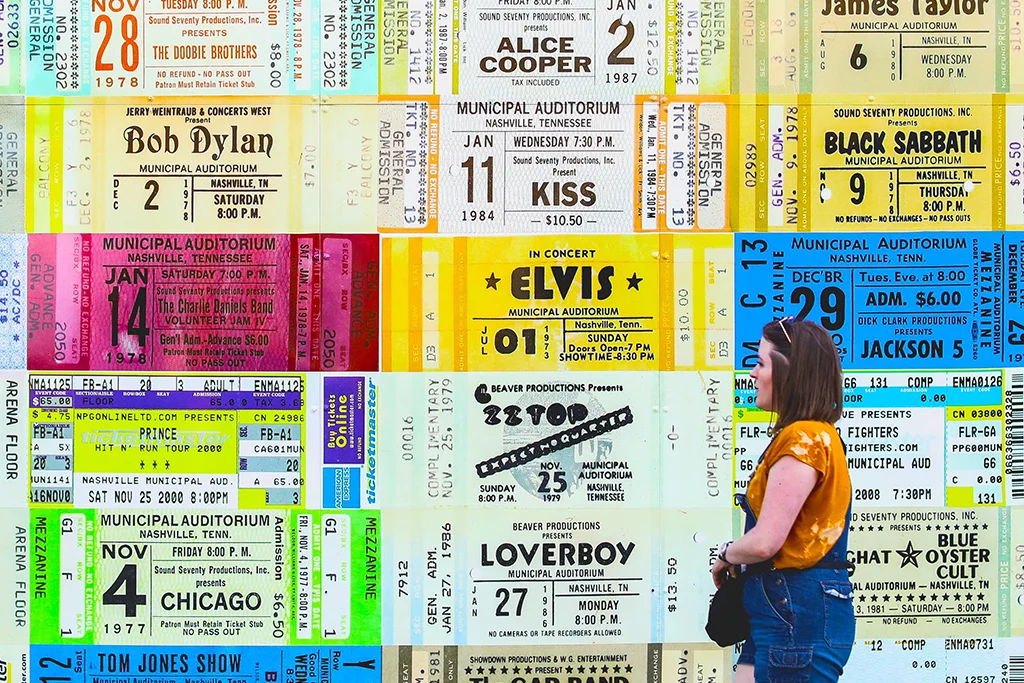
“It’s truly amazing that 2.4 million people got tickets, but it really pisses me off that a lot of them feel like they went through several bear attacks to get them.”
-Taylor Swift
But according to Krista Brown, a senior policy analyst at the American Economic Liberties Project (AELP), this failure roots in a greater problem. AELP is a non-profit organization that works after dismantling monopolies to assert antitrust laws. They have been vocal about the impact of big tech monopolies like Amazon, Google, and Facebook.
Adding more on the Ticketmaster fiasco, Brown says:
“The 2010 merger between Ticketmaster and concert promotion company Live Nation gave Ticketmaster a virtual monopoly over ticket-buying consumers, artists like Swift, and the venues where they play.”
After-Effects of The Merger
The merger creates a network of exclusivity agreements with venues and artists, due to which users usually have to use the Ticketmaster interface to see certain artists. Artists face limitations too. Multiple stadiums and concert venues have Ticketmaster exclusivity deals where playing at a venue would mean using Ticketmaster as their vendor.
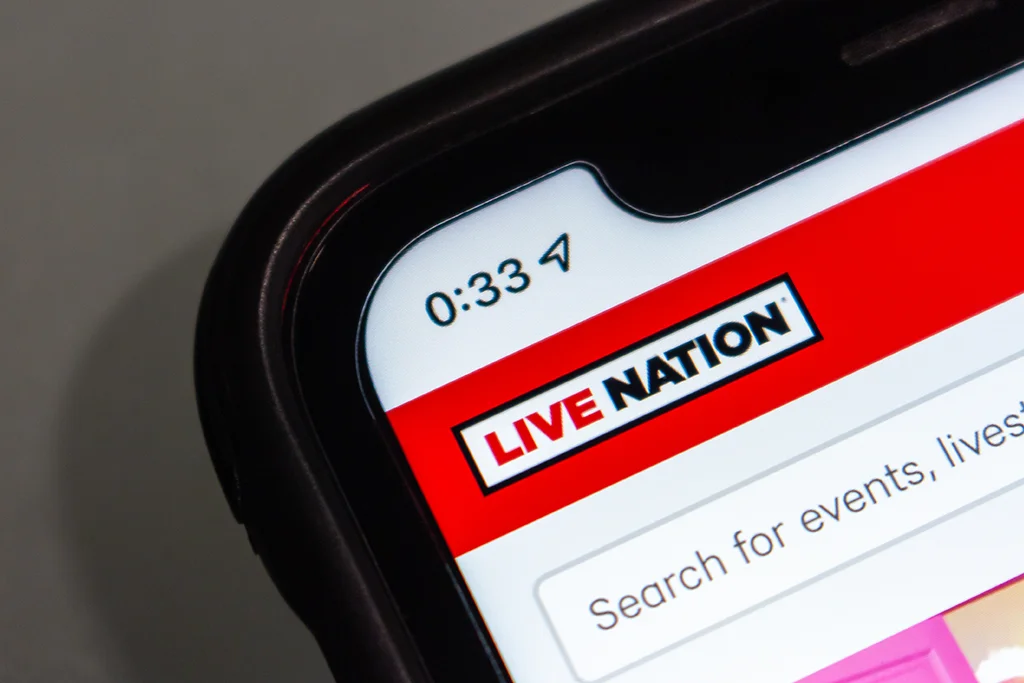
“We don’t go back to bad restaurants. If you have a bad restaurant experience, you leave because there are 20 others you can go to,” Brown says. “But when you go to Ticketmaster, you prepare for a horrible experience. And you are also prepared to have to do it again and again.”
A Dystopian Monopoly
Consumer loyalty matters to most corporations. Usually, a company doesn’t just go around upsetting its user base with absurd ticket pricing, lethargic websites, and being shut out of tickets. But Ticketmaster’s marketplace dominance allows it to continue as it is, even if it’s delivering a horrific experience.
Imagine the user’s frustration!
Coming back to what happened — fans spent an entire day in queues to not end up with a single ticket. And then everything went downhill.
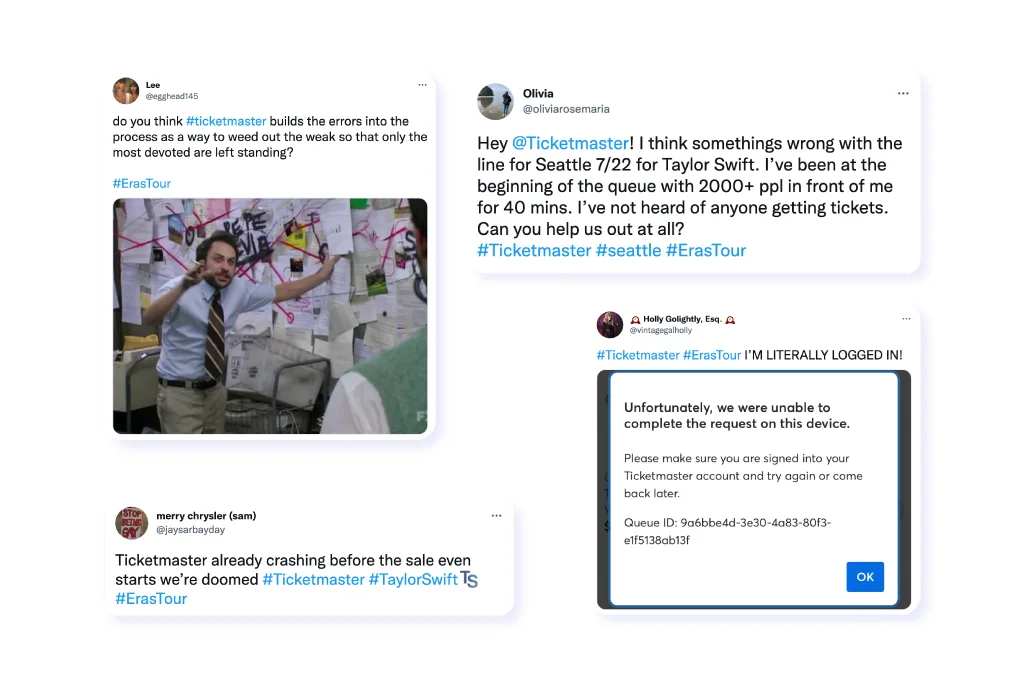
Ticketmaster faced a groundswell of anger, and even a few lawmakers started talking about Ticketmaster’s market position and monopoly.
Yikes!
User Experience: The Skeleton in Ticketmaster’s Closet
You would think that tickets are hard to get because the Ticketmaster site got flooded with millions of requests. But there are many deep underlying UX issues here. Let’s explore them.
Let’s talk more about the Site Crashing Issues
Ticketmaster said that, during the presales purchase, approximately 14 million users rushed to the site. The company sold 2.4 million presales tickets. The fans who came through the presales code ran into numerous malfunctions.

Some people lost the tickets right during purchasing them, while others were left in the middle of a transaction. Many got charged for it but never received the tickets. Millions were shut out of buying tickets altogether.
The user experience was terrible, to say the least.
It was Taylor’s first tour in five years, and Ticketmaster must have known that the demand would be huge. Besides, with the increasing issue of automated purchasing systems and bots from resellers, it was pretty clear that Ticketmaster’s servers would be busy. But, it seemed that either Ticketmaster did not estimate this impact on their servers or did not care for its consequential impact on the user experience.
Over the past few years, Ticketmaster has been criticized for its hold on the live event industry. It reportedly controls more than 70 percent of all ticketing and event venues. It has created a significant lack of competition in the industry, which could characterize it as a monopoly. It contributes to Ticketmaster’s lack of regard for user experience. The website crashing problem wouldn’t exist at this scale if there were other competing websites.
Complete Lack of Ingenuity
We live in an era with cloud-based systems. Organizations can easily get a momentary and secure extension to your services to tackle high-volume demands. There were multiple safeguards that Ticketmaster should’ve considered to avoid the overwhelming demand, such as adopting additional resources (servers that can handle more queries at a time) to their service to tackle a large number of requests. The reality, however, is that their systems got overwhelmed almost immediately and shut down as the pre-sales started.
Soon after, Ticketmaster announced they were canceling the public sales effective immediately. The company then went on to claim that their systems were fine — it was the scalpers and their bots that caused the problem. Scalpers are usually resellers who purchase the tickets in bulk and resell them later to turn a high profit for themselves.
While the surge in demand is understandable in a post-pandemic world, there’s no reason that buying concert tickets should be emotionally draining and overly expensive. Besides, it is the site’s responsibility not to exploit its users’ vulnerabilities. Instead, they should simplify the UI and prevent the bots from spamming.
Ticketmaster’s Failure to Recognize the Bots
On the day of Ticketmaster’s presale, one fan wrote on Tumblr:
“When I die, I want Ticketmaster Verified Fan to lower me into my grave so they can let me down one last time.” This sentiment was liked by more than 1,000 others.
Verified Fan is a major piece of Ticketmaster’s fandom outreach where fans can register through email before a presale. After registering, they receive a code they can use during a fan-only presales window. The engine behind this mechanism is a behavior predictor that offers codes to users who’re more likely to use the ticket than resell it.
Basically, that’s how they verify scalpers and their bots.
The basic process of verifying the legitimacy of fans is the same, but artists can add a layer on top of that. This layer would boost the user’s chance to get ahead in the queue. The boost could be buying the artists’ albums, merchandise, etc.
It supplements the Verified Fan program and sorts fans into a line, with the most dedicated rushed to the front. Despite all this, the mechanism failed on the day of pre-sales and faced multiple bot attacks.
Dynamic Pricing And The Rage Against It
In 2011, Ticketmaster announced that it would begin adjusting prices based on consumer demand, also known as dynamic pricing. Their aim was to prevent tickets from resellers and secondary platforms. It is usually the artist’s call to decide whether or not they want to go for the dynamic pricing model. Many artists also offer their best seats under the name of “platinum tickets” through this variable pricing system.
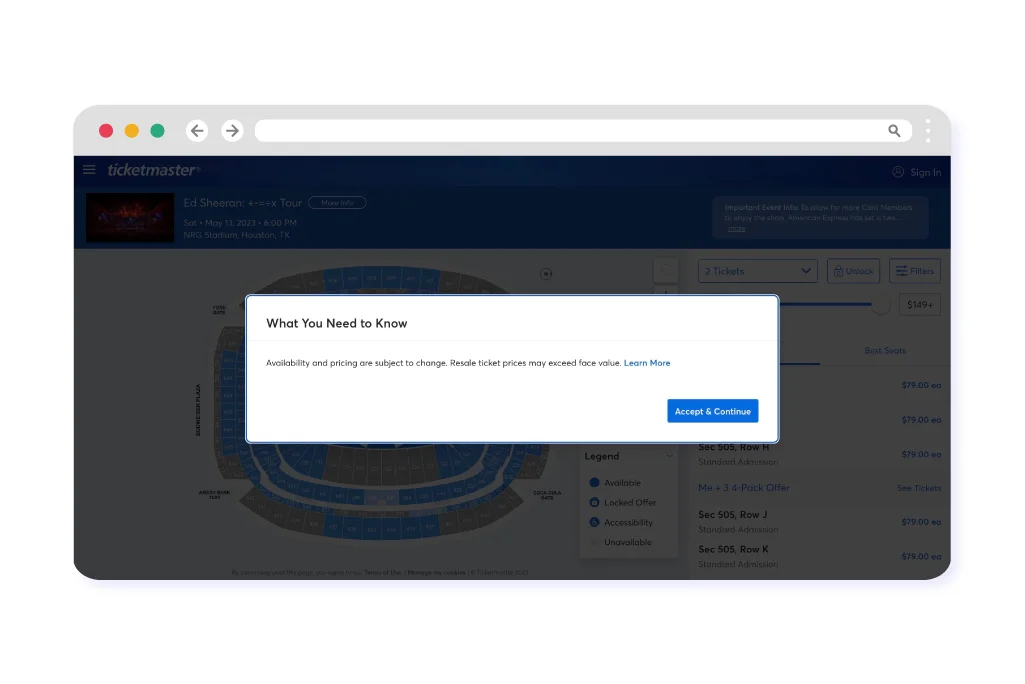
Ticketmaster follows the same dynamic pricing model. They have an unusual hold on ticket sales, and their control over the market makes them a single supplier. Ticketmaster’s ability to leverage the power of this monopoly is alarming. It seems they hold an attitude of “We have deals with all of the largest venues. We can demand whatever we want regardless of the user experience we provide.”
On The Contrary,
Ticketmaster says it has no control over the pricing, nor does Live Nation. Although, just two years ago they gave away $5 million in ticket vouchers to settle a class action lawsuit over their aggressive service fees.
Regardless, they see it as an opportunity to lightly exploit people willing to pay as dearly as they can afford for an experience they want.
It’s Not Their First Time
Users have been complaining about Ticketmaster’s hefty dynamic pricing, complex buying journey, interface, user experience, etc., for a long time.
Minimum Efforts To Change The Status Quo
The above Reddit threads show that users have despised using the Ticketmaster interface over the years because they have no other choice. And Ticketmaster has put minimal effort into making the user experience better.

They’ve Always Adhered To Dark UX Patterns
In his lecture “Dark Patterns: Online Manipulation of Consumers,” Lior J. Strahilevitz talks about how Ticketmaster exploits users’ cognitive biases to manipulate them into signing up for things they might not want. He describes how Ticketmaster employs multiple dark pattern techniques on their website. Let’s go through them:
Event Insurance
Once they sell a ticket, they push users’ to purchase the event insurance. It is absurd to ask users to buy insurance to be able to cancel their tickets, especially when some of the tickets cost as less as $20-25.
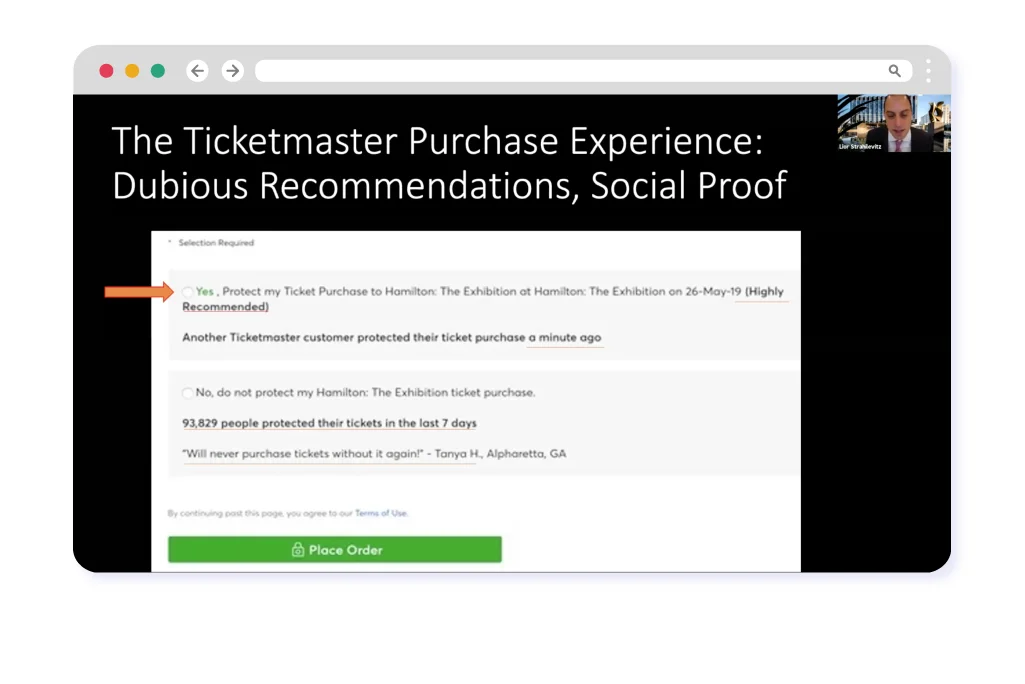
Social Proof
Ticketmaster usually shows text like, “93,824 users purchased the insurance or protected their tickets in the last seven days.” Research that scrapes the codes from multiple eCommerce sites finds that much of this information is inaccurate and fake. These usually create a bandwagon effect with fake stats generated by random number generators to push the user further into buying the insurance.
Nagging
Ticketmaster uses another dark UX pattern called nagging. It pushes users to allow Ticketmaster to send push notifications from time to time. The problem is that if a user selects the “maybe later” option, they send the exact same message after a week. They keep sending the message every week until the user finally allows them. It can be frustrating for users
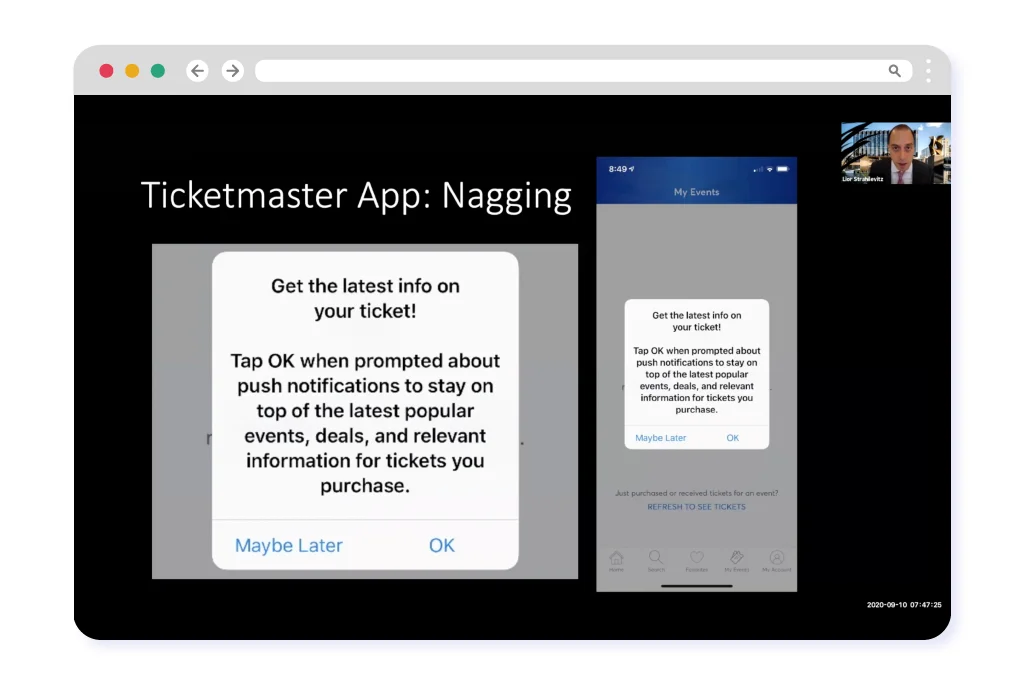
The Irony of Their Digital Ticket Feature
Ticketmaster has been trying to work on providing paperless tickets since before the pandemic. But the instructions on the tickets contradict the entire idea of going paperless. The instructions say, “you must take a printed copy of this original purchase confirmation email.” It is not how a digital feature works. It is absurd to make users carry a piece of paper to enable them to use the paperless ticketing feature.

Source: A confirmation email sent to a user for Hamilton Musical
Ticket Design Failures
Once you have the tickets, it grants fans access to something they’ve been looking forward to for months. But the current ticket designs fail terribly. It’s hard to read and feels like it was made on a typewriter. Users cannot find their seat location, the event name, location, time, day, and date.

All this information is buried at the bottom of the ticket and is hard to read because of the small font size and poor line spacing.
Final Thoughts
As a result of the fiasco, the US Department of Justice and Attorneys General for the states of North Carolina and Tennessee have initiated investigations into whether or not Live Nation and Ticketmaster constitute a monopoly because of their size and market position. The claim is that only a company with monopolistic powers could cancel public sales for an entire concert tour.
It is a classic example of an enterprise system failing to meet the basic user requirements. It is terrible in this case because users have nowhere else to go — no competitors and no other way to get access to the concert. Let us know your thoughts on this.









